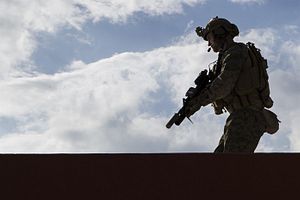Last week, the Wall Street Journal reported that the U.S. Department of Defense is considering a prospective rebalance of forces from the Middle East to the Asia-Pacific region. According to the report, the U.S. may send U.S. Marine Corps (USMC) Expeditionary Units (MEUs) to the region, “curtailing some deployments in the Middle East as it repositions forces in response to growing Chinese influence.”
That such a plan is under active consideration isn’t a surprise. With the defeat of the Islamic State’s territorial caliphate in 2017 and a new National Security Strategy (NSS) and National Defense Strategy (NDS) from the Trump administration describing great power competition with China (and Russia) as the top priority for the United States, a force rebalancing appears apt.
The WSJ also makes clear that the move is being considered in strategic terms and not as a short-term response to still-high tensions on the Korean Peninsula, following a year of unusually intense ballistic missile testing from North Korea. MEUs already offer the United States an important range of capabilities in the region, including in building soft power during peacetime. Missions for these units could include humanitarian assistance and disaster relief, buttressing the U.S. Navy’s presence.
In addition to supporting the administration’s push to balance China by reallocating forces from the Middle East to Asia, stepped-up MEU deployments in the Asia-Pacific would be welcomed by like-minded regional partners, including Japan, Australia, and India. If the administration intends to offer up a quick deliverable to show that it is willing to put the pedal to the metal in its pursuit of a “free and open Indo-Pacific,” authorizing further rotational USMC deployments in Asia might be one way to do that.
For now, there’s no clear idea of the specifics of the scope of the plan and whether it includes the scheduled increase of U.S. Marines who deploy in Darwin, Australia for part of the year. A more ambitious decision would include the regular deployment of an Amphibious Ready Group (ARG), comprising a Navy element (think an amphibious assault ship, dock landing ship, or amphibious transport dock) in addition to an MEU.
Last month, USS Wasp, the F-35B-equipped lead ship of the Wasp-class amphibious assault ships, was deployed to Sasebo, Japan, where it will support the 31st MEU (the only forward-deployed MEU as of early-2018 in the Asia-Pacific). If the Pentagon comes up with a plan to rebalance we may see the 15th MEU, which conducted a seven month Asian deployment in 2017, return to the region. If the Trump administration is looking for a quick way to show that the NSS and NDS will be backed up by actions, this might be one of the ways it looks to do that.

































